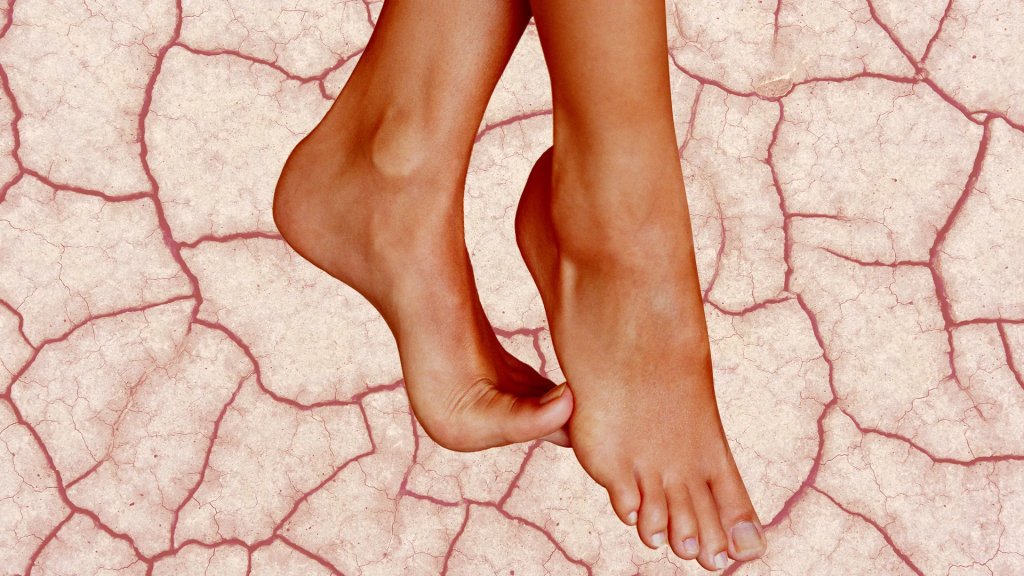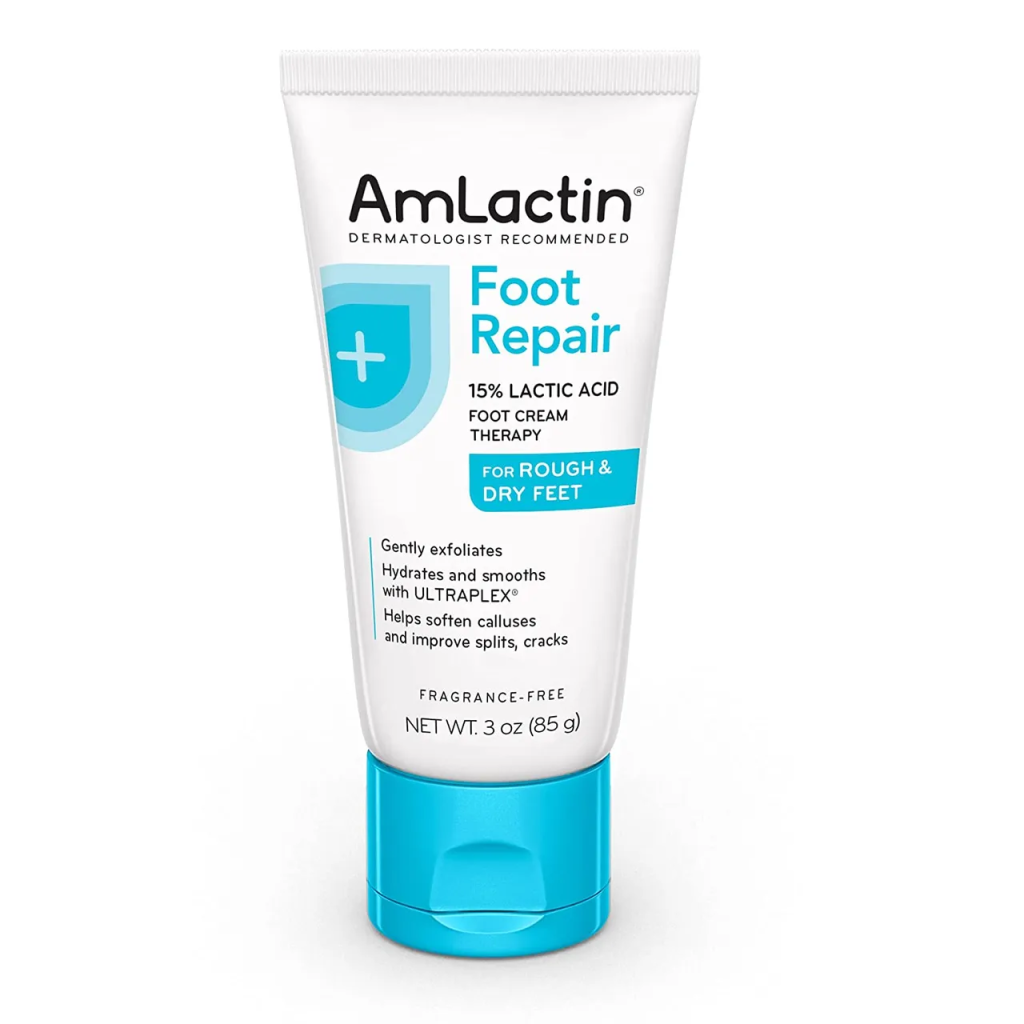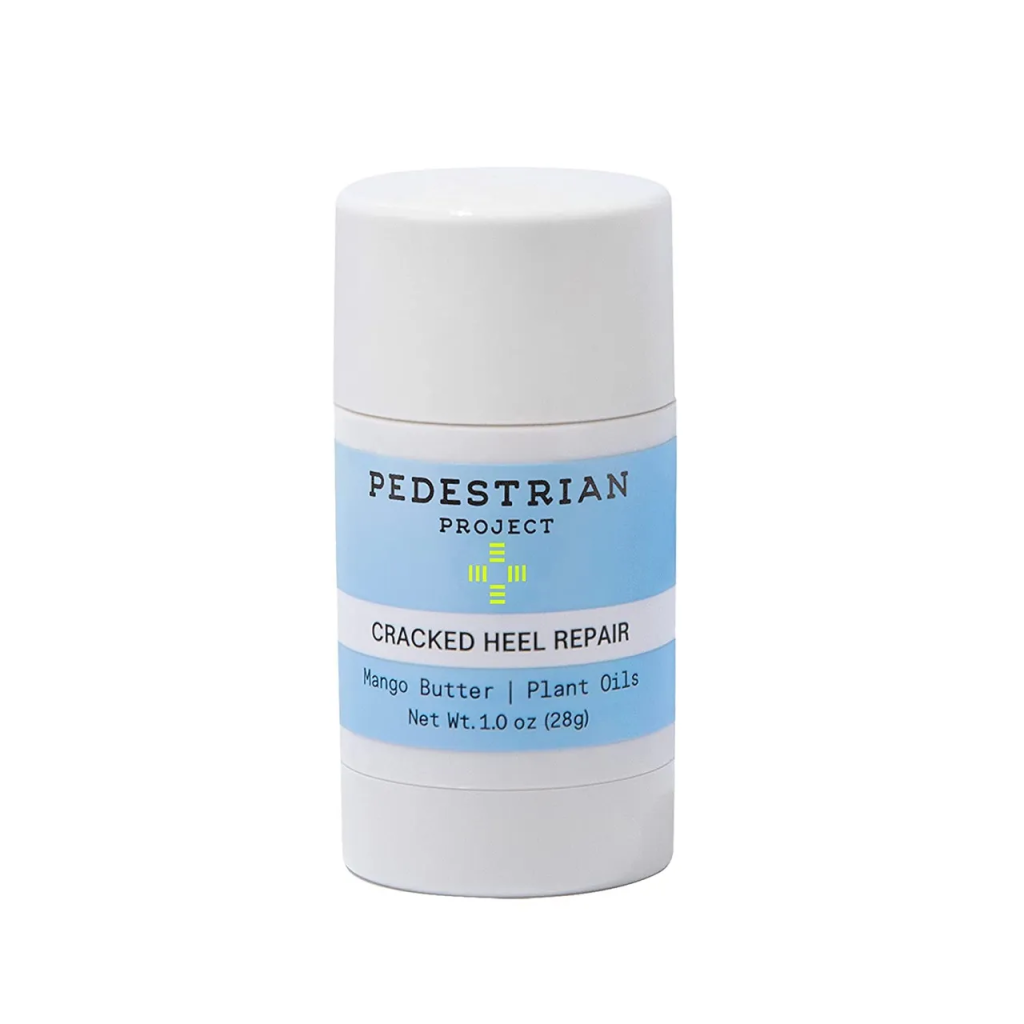These tips will help you determine if your podiatric problem is a case for your manicurist or dermatologist.

Feet aren’t the most glamorous topic, but that doesn’t mean they don’t need your attention — especially when they’re looking or feeling off. In the specific-yet-common case of dry, cracked heels, the encouraging news is that there are plenty of easy (and fast!) ways to heal them. Where it gets more complicated is determining why you might be dealing with dryness and cracks in the first place.
A visit to the nail salon for a pedicure with the works may suffice for one person, while another might require a medical expert’s input. To shed light on the root causes of your dry, cracked heels, we consulted a board-certified podiatrist and two dermatologists, seeking their professional insights. They broke down primary causes and practical solutions that promise fast-as-possible results and relief so you can put your best foot forward this sandal season and beyond. Keep reading for answers to your most pressing questions.
What causes dry, cracked heels?
Before delving too deeply into WebMD (and perhaps spiraling into a panic), you should know that dry, cracked heels aren’t typically a major concern but rather just a buildup of the top layer of skin resulting from friction and regular use, according to Leah Ansell, MD, a board-certified dermatologist at Treiber Dermatology Associates in New York City. And you’re not alone — it’s “very common in adults,” she says.
Your dry, cracked heels may also be side effects of a skin condition, two of the most common being psoriasis or eczema. The former often presents with red, inflamed skin and small fluid-filled bumps, says Rina Weimann (Allawh), MD, a board-certified dermatologist at Schweiger Dermatology Group in Pennsylvania. “If left untreated, it can lead to significant dryness and linear ‘knife-like’ cuts on the heels known as fissures, resembling ordinary cracked heels,” she adds. Eczema, on the other hand, can be trickier to identify because it presents as cracked and scaly patches that can resemble regular dryness or cracking.
There could be two lesser-known causes at play, too. Dr. Ansell sheds light on the possibility of fungal infections like tinea pedis — commonly known as athlete’s foot — and a rare inherited condition called keratoderma. With the latter, the skin on the heels thickens remarkably, creating an uncomfortable and visually jarring situation. It’s worth mentioning, according to Dr. Weimann, that keratoderma is believed to be linked to hormonal changes and is more likely to occur during menopause.
And now for some debunking. While some believe that a vitamin deficiency is to blame for dry, cracked heels, Anne Sharkey, DPM, a podiatrist with the North Austin Foot and Ankle Institute in Austin, dismisses this as rare in the States and other developed nations. She explains that deficiencies in vitamins E, C, and B can indeed contribute to dry skin, but it’s more likely that one of the causes mentioned above is the root cause of your condition.
And as for dehydration? Unfortunately, guzzling water from your Stanley tumbler won’t work miracles for your heels. Dr. Ansell sets the record straight, declaring that dry, cracked heels aren’t directly related to dehydration caused by insufficient water intake. That said, simply quenching your thirst won’t provide relief — though you can’t go wrong with staying hydrated.
When should I be concerned about cracked heels?
If the condition extends beyond mere dryness to pain, fissures, or peeling, it’s crucial to promptly contact your dermatologist and secure the earliest possible appointment. As discussed, these symptoms could indicate an underlying infection or inflammation that requires professional attention and treatment. When it comes to addressing them on your own, there’s little that home remedies can do, if anything at all.
How do I heal my cracked heels?
Dr. Ansell recommends using a cream enriched with urea or lactic acid. This helps gently exfoliate the outer layers of dead skin. (Among the highly regarded and budget-friendly options, AmLactin Foot Repair Foot Cream Therapy stands out.) She strongly favors this approach over harsh mechanical exfoliation techniques, such as foot files, which carry the risk of exacerbating the condition, causing discomfort, or even leading to infection.

AmLactin Foot Repair Foot Cream Therapy
The best treatment for dry, cracked heels really is prevention, Sharkey says. This involves choosing well-fitting shoes that don’t excessively rub against the heels and following a dedicated foot care routine that includes soaking, reducing calluses with a pumice stone, and moisturizing. (FYI: Dr. Ansell supports using pumice stone as a mechanical technique, as it is less abrasive to the skin and aids in gently exfoliating dead skin. Just remember: “A file can penetrate deeper and cause pain and open cuts,” she says.)
Sharkey consistently recommends The Pedestrian Project Cracked Heel Repair for her patients due to its convenient stick format, which allows for effortless application without any mess. She fondly refers to it as “Chapstick for your heels” and praises its natural ingredients (African shea butter, mango butter, black currant oil) as “safe for even the most sensitive feet.”

Pedestrian Project Cracked Heel Repair
However, Dr. Ansell emphasizes the importance of rehydrating the skin with moisturizers containing ceramides. This approach proves beneficial not only for addressing dry, cracked heels but also for managing mild cases of eczema as it helps replenish lost fats, according to the dermatologist. To maximize effectiveness, she suggests applying a generous amount of a thick cream, such as the Aveda Foot Relief Moisturizing Creme, to the affected areas and covering them with plastic wrap for more effective absorption.

Aveda Foot Relief Moisturizing Creme